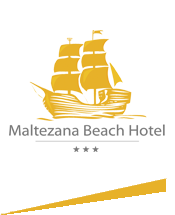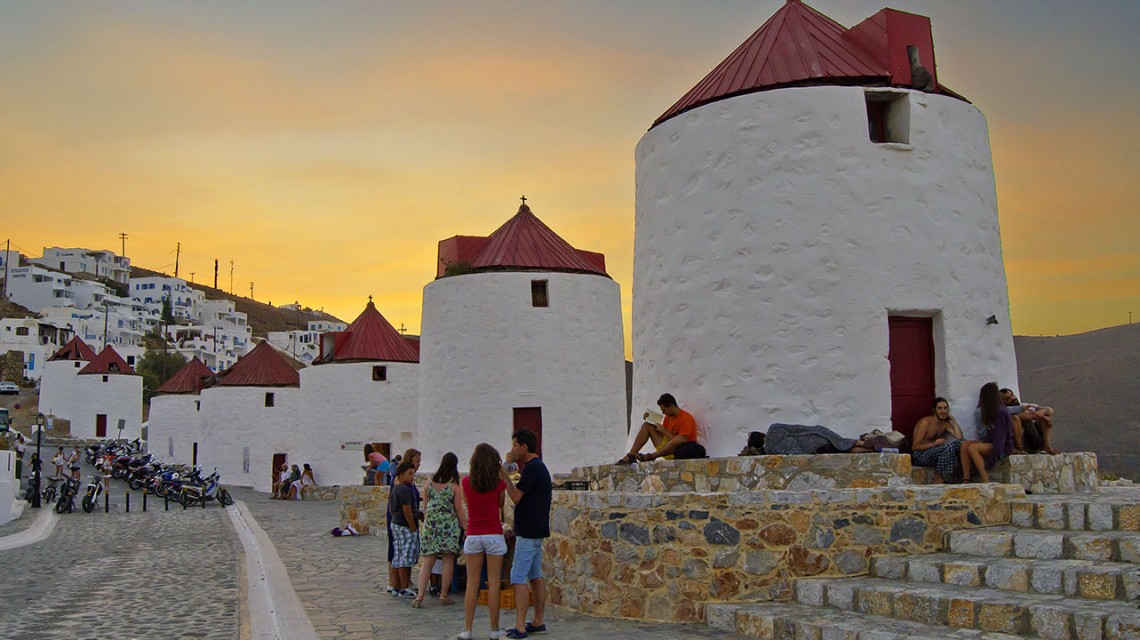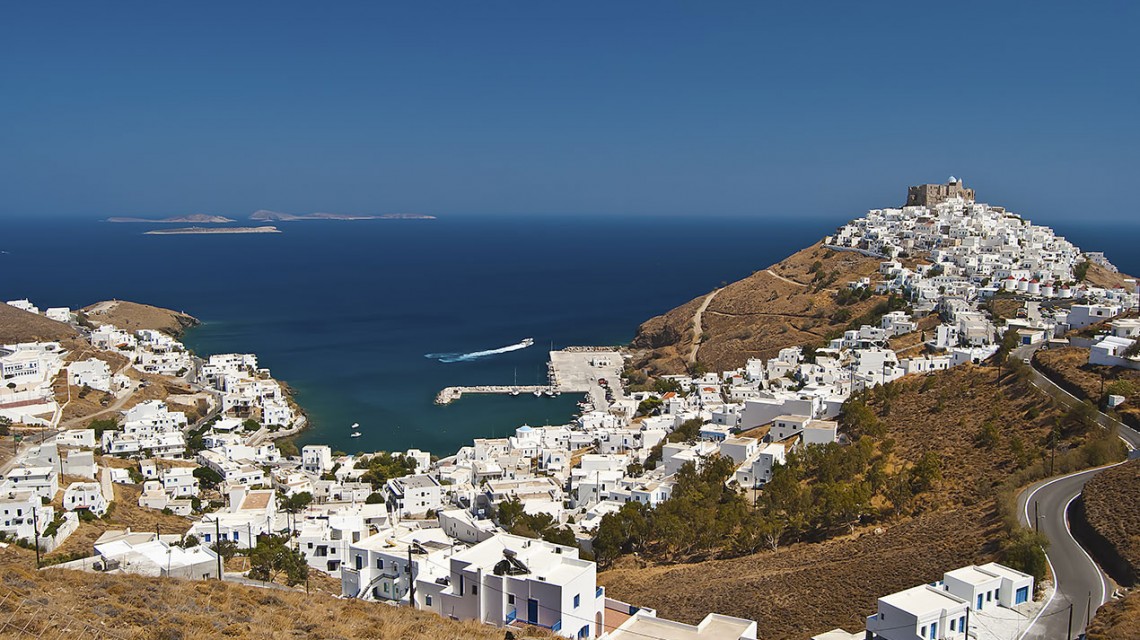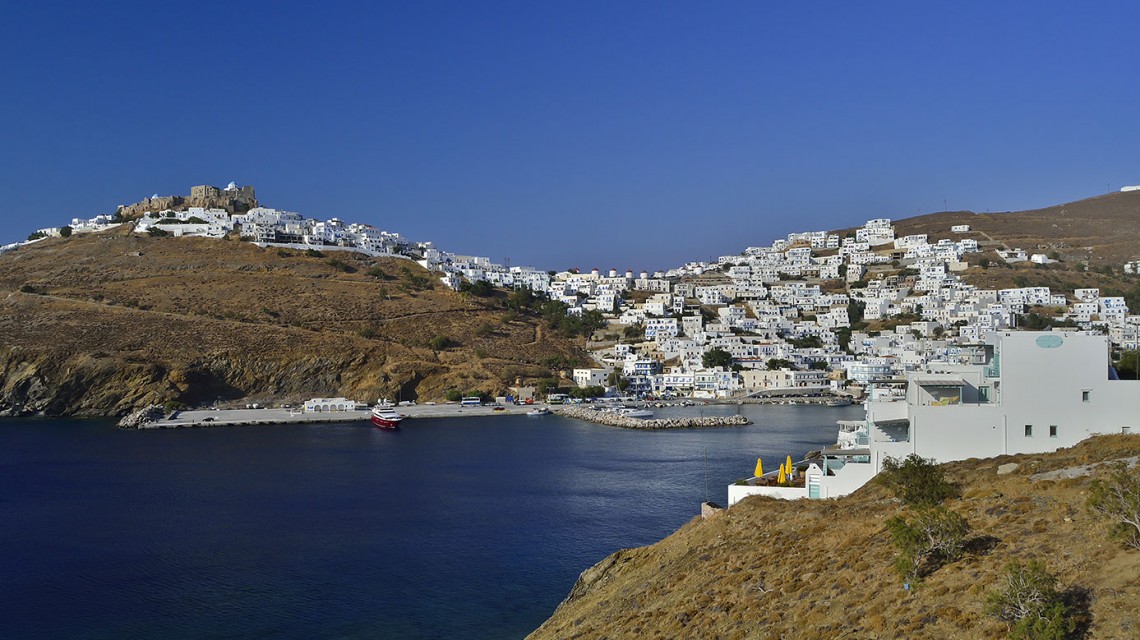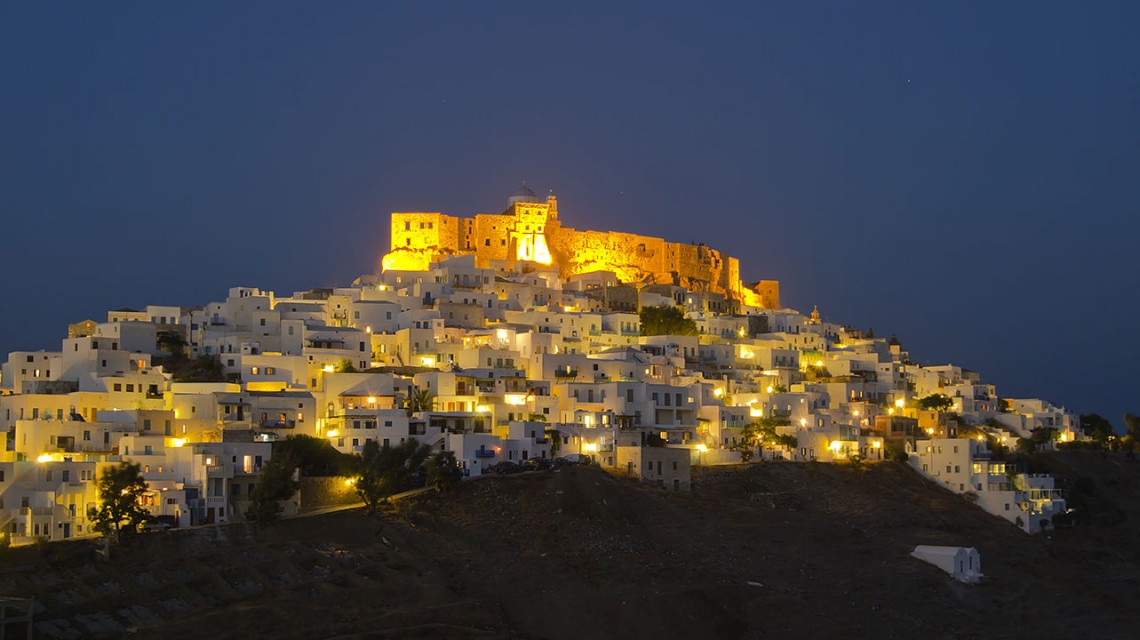Astypalaia at a Glance / The Butterfly of the Aegean
Astypalaia has a long history, ranging from the Protocycladic times, to the Golden Age and the Athenian Alliance, to the Roman times, the Byzantine times and lately to the Venetian rule, the Turks and the Italians, where in 1948 it was reunited with the rest of Greece. Located exactly where the Dodecanese meets the Cyclades, Astypalaia mixes up the deep Aegean blue with the little white houses setting up captivating scenery.
Each place, each island has its own history. So does Astypalaia. Discover its archaeological, historical and cultural wealth. Add another pebble in the history of Greece, the Aegean and the Dodecanese. See and hear the historic imprint of the island from antiquity to the present day through its inhabitants, festivals and culture. Get information about the wars, the difficult years, the settlements and understand the destination through the mental outlook of the Astypalean people.
Villages | Chora
Chora, the island’s main village, is one of the most beautiful in the Aegean Sea. Its landscape is dominated by the Venetian castle of Querini, encircled by small whitewashed picturesque houses with blue doors and windows, and wooden balcony rails. Within the castle there are two churches, painted in pure white colour, with elaborate stone belfries: Panagia Evangelistria (1853), inside which you will come across the founders’ inscription dated 1413 and the Querini coats of arms, and Agios Georgios. At the Castle’s west, white houses fill the hill to meet the eight windmills located over Skala. Astypalea’s pride, the windmills belong to the “xetrocharis” category, a horizontal axis type with the roof turning according to the wind direction. The Archaeological Museum and the church of St. Nickolas, easily noticeable by its pale blue dome, are must-visit places on the island.
Villages | Maltezana
Astypalea is situated in the middle of the Aegean and it is also known for its natural well protected coves. Maltezana is the most famous fishing village of the island, with the small taverns next to the beach, the intresting archaeological findings and the picturesque scenery. You can relax in Maltezana’s beautiful beaches with the crystal clear water and feel the magic of the deep blue.
Analipsi is a coastal village with beautiful sand that lies in a small valley in “Mesa Nisi”. Maltezana is the second name of the village, probably from the pirates who used to travel through the Aegean trying to find a safe cove for shelter. This is where the French Admiral Bisson set his ship on fire in 1827 so that it may not be captured by the pirates. Today the cove of Maltezana mostly serves as a harbor to private sailboats and small local fishing boats. With these small fishing boats someone can visit the islets of Chondro, Ligno, Agia Kiriaki, Koutsomyti and Kounoupa for swimming, snorkeling and fishing. You can also visit Talaras Baths and their Hellenistic period mosaics that are unique in the Hellenic world, colored in light blue and brick shades, as well as an interesting composition that depicts the four seasons and the symbols of the zodiac. Finally, the two basilicas of Agia Barbara and Karekli with the WWII shipwreck conclude the historic and heroic puzzle of the village.
Villages | Vathi
Vathi is the smallest settlement of Astypalea. It is located in the north eastern side of the island close to a beautiful lagoon. The visitor will meet just a few houses there and Ms Stavroula’s traditional tavern. A natural and provocatively beautiful environment. Traditional and daily images of the island. Vathi with its powerful footprint in history and with its archaeological and Christian heritage stands on the island alone and proud. It’s worth to visit and travel in time where the simplicity of life finds its true meaning.
Villages | Livadi
Livadi is the most fertile valley of Astypalea. In just 2 km from Chora the visitor comes to the most cosmopolitan beach of the island. From Livadi beach until the dam of Astypalea you will admire a puzzle of vegetable gardens and crops of evety kind. Livadi is in a way the green heart of the island where the dam’s ecosystem comes to complete the caprivating natural scenery. You will also relax and have fun in the tavernas and cafes of this village admiring the beautiful view of the west side of the castle.
